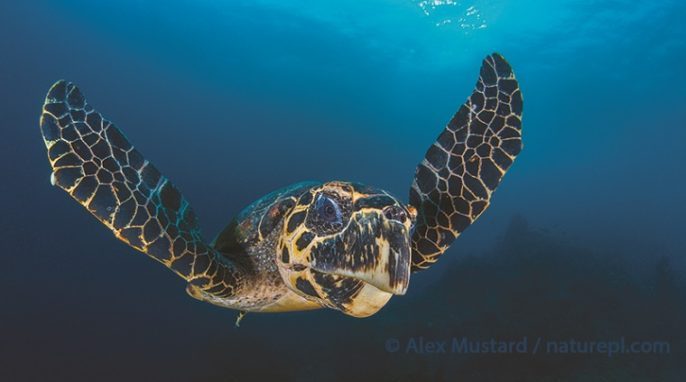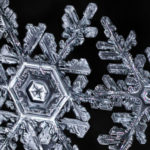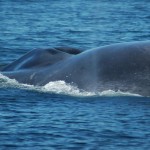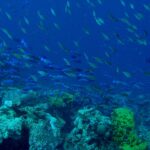Secrets of the Seas: A Journey into the Heart of the Ocean
Title: Secrets of the Seas: A Journey into the Heart of the Ocean
Reviewed by: Steven Spence
Author: Callum Roberts
Photographer: Alex Mustard
Publisher: Bloomsbury Natural History

Secrets of the Seas: A Journey into the Heart of the Oceans is an extraordinary book. Visiting multiple ocean locations, the author and photographer offer glimpses of marine life diversity that few people ever see firsthand.
Why I Enjoyed Secrets of the Seas
As a nature photographer, I place great value on both animals being in their natural settings and the integrity of the photos I take. Alex Mustard’s award-winning photography exemplifies everything I aspire to in photography. His work is consistently excellent—technically, emotionally, and artistically. It’s even more amazing when one considers the special challenges an underwater photographer faces in terms of light and color casts.
Callum Roberts’s writing in both the chapters and the captions is engaging, educational, and easy to read. The reader is gently but rapidly immersed in the locale of each chapter. Roberts describes key elements of the flora and fauna in each ecosystem. He clearly explains threats to the marine environments and provides examples of recovery when nature is protected from overharvesting of resources. The text is the right length (approximately 1,500 words per chapter) to accompany the photos without overwhelming the reader.
Every page of Secrets of the Seas: A Journey into the Heart of the Ocean is a visual and educational voyage into a secret underwater world.
A Brief Excerpt
“Immersed within seas so over-brimming with life, your thoughts begin to drift: how did such wonders come to be; why are there 20 different ways to be a plankton-feeding damselfish; why 500 ways to be a crab? Callum was once asked at the end of a lecture by a member of the audience, “What is the purpose of whales?” It is tempting to see the world in selfish human terms as if species were only there to serve our needs. Such thinking leads to unfortunate places, to asking for example, how many species do we really need, how many are expendable, which are most valuable?” —From Secrets of the Seas: A Journey into the Heart of the Ocean
What You’ll Find Inside Secrets of the Seas
“Riches beyond measure” introduces the colorful and wondrous world of the Coral Triangle. Representing only 1.5 percent of the oceans, it supports one-third of the world’s coral reefs, 2,500 species of fish, and 600 corals. The diversity of corals and fish species is higher here than in any other reef area in the world.
“What is natural?” examines marine life in the North Atlantic and how it has changed in the last 200 years. Sharks, crustaceans, codfish, tuna, and cuttlefish are some of the creatures you’ll meet in this chapter. Roberts clearly shows how species have been impacted by human activities and calls for some areas to be protected from trawling, dredging, and fishing, in order for species to have refuges in which to recover. It seems a reasonable and modest proposal for sustaining the diversity of nature in the North Atlantic.
“Perfection in motion” demonstrates the sleek design and efficient elegance of sharks, skates, and rays. Whitetips, tiger sharks, basking sharks, great white sharks, tasseled wobbegongs (probably the most humorous species name I’ve heard yet), whale sharks, stingrays, hammerhead sharks, blue sharks, giant manta rays, Atlantic devil rays, and spotted eagle rays are all revealed in beautiful pictures emphasizing the perfection of their forms.
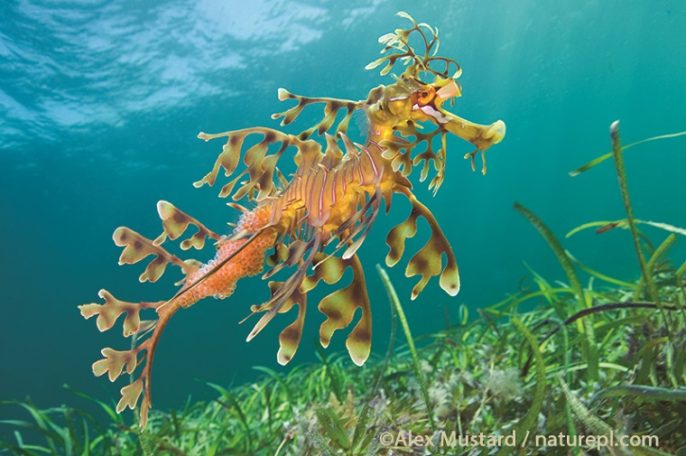

“Transitions” is devoted to animals that depend on both water and land. Shorebirds that swim underwater to fish are in this category. There is a fantastic photo of an Atlantic puffin “flying” underwater. Turtles that spend their lives in the water, but must go ashore to lay their eggs, are another example. The gentle manatee’s transition from land animal to aquatic animal is also covered in this chapter.
“Spineless” marvels at the colorful diversity of the myriad invertebrates inhabiting reefs. From corals to crabs, from jellyfish to nudibranchs, from shrimp to octopuses, this chapter stuns with spectacular shapes and incredible colorations.
“Seaweed cathedrals” inspires with beautiful kelp forests, playful seals, flamboyant seadragons, schools of fish, and various crustaceans. Roberts skillfully illustrates how humans’ hunting of otters or overfishing of lobsters can result in an ecosystem tumbling out of balance. Without otters or lobsters, other animals such as sea urchins and starfish can multiply so much that they reduce these kelp forests to nothing but barren stretches of rocks.
“The nature of beauty” asks why one fish is beautiful and another is not. Colors, patterns, and forms are themes throughout this chapter. Mustard’s photos also demonstrate that scary-looking animals can be beautiful. Imagine a golden fangtooth moray eel opening a cavernous maw with teeth as sharp as daggers and as translucent as icicles. Ever stared into an eye flecked with gold dust, emeralds, or rubies? Mustard shares mesmerizing photos of fish eyes, while Roberts explains how such features help fish see better.
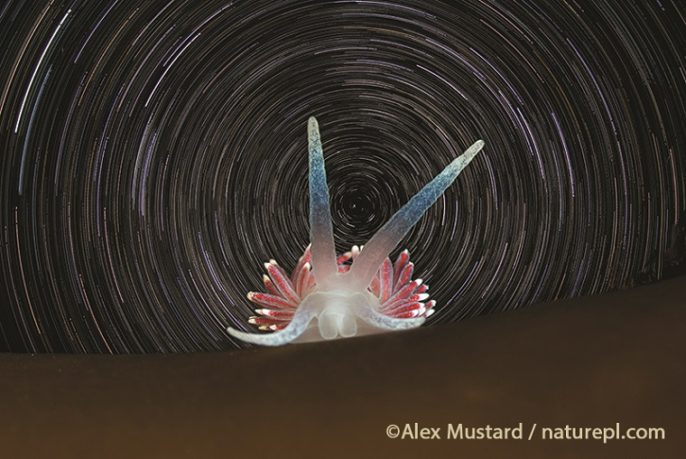

“Sea change” focuses on the Caribbean reefs. They are more isolated than many other reefs and have a lower overall species diversity, making them more vulnerable to changing conditions. Human intestinal bacteria have infected and wiped out corals in many places. Lionfish have been introduced and have decimated native species that lack an effective strategy to deal with them. Humans almost harvested some types of conchs to extinction, but thanks to good fishery management and increased awareness, these species have been successfully protected and are now rebounding. Lest you think this chapter is all about threats, it also celebrates beautiful stands of staghorn coral, yellow and black rock beauty angelfish mating, and a close encounter with a Caribbean reef shark.
“Desert Ocean” looks at the world’s youngest and smallest ocean, the Red Sea. Walls of fish, circling barracuda, sky and sea photos, underwater caves, and outrageously colored groupers await the reader. And what book about reefs would be complete without clownfish in the post-Nemo world? This is the chapter where you will find them.
“Back from the brink” focuses on seals and sea lions. These animals were prized for their pelts and hunted to the brink of extinction. The graceful, lithe creatures will delight the reader with inquisitive looks, playful frolics, and friendly greetings in Mustard’s photos. Roberts ends with this thought: “The seal comeback shows that wildlife can thrive in a human-dominated world.”
About the Photographer
Alex Mustard has been taking underwater photographs for 30 years. In 2013 he was named “European Wildlife Photographer of the Year” and was a category winner in the UK Natural History Museum “Wildlife Photographer of the Year” competition. His last book, Reefs Revealed, won the International Grand Prize for the best book of underwater photographs.
About the Author
Callum Roberts is Professor of Marine Conservation at the University of York in the UK and is author of two award-winning books, The Unnatural History of the Sea and Ocean of Life: How our Seas are Changing. For the last 25 years he has used science to make the case for stronger protection for marine life at both national and international levels.

